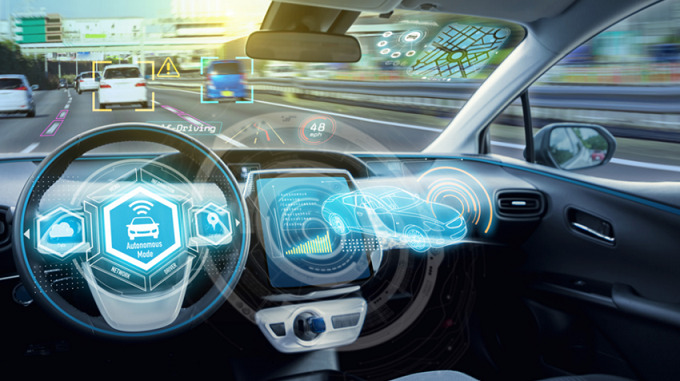Research In Action
Research In Action
Breadcrumb

As autonomous vehicles move closer to becoming a reality on U.S. roads, protecting drivers and passengers remains a top concern. I recently presented at the MAP 21/Mobility 21 Deployment Partner Consortium Event at Carnegie-Mellon University in November and was encouraged to see so many people coming together to focus on mobility and making self-driving vehicles as safe as possible.
My colleague Tom Seacrist, MBE and I presented a poster, entitled “Reaction Times, Ux and Biomechanics in Self-Driving Vehicles,” and provided an overview of research projects my colleagues at Children’s Hospital of Philadelphia and I are conducting. Polly Tremoulet, PhD and I are working on a project that focuses on seating configurations in autonomous vehicles that will keep child passengers the safest. Some who attended my presentation expressed surprise at the subject, not only that a hospital was conducting research on child safety in self-driving cars, but that child safety in these vehicles was being addressed at all.
The Consortium event underscored for me that CHOP is one of the few organizations studying children’s safety in vehicles that will be widely available sooner than many people think. It’s therefore vital that the studies conducted by Helen Loeb, PhD, Polly Tremoulet, PhD, Thomas Seacrist, MBE, Jalaj Maheshwari, MS, and me at CHOP’s Center for Injury Research and Prevention (CIRP) reach the right audiences.
With funding from the Center for Child Injury Prevention Studies (CChIPS), our studies can help designers and operators of autonomous vehicles keep children in mind. As I explained in my poster presentation, research projects being conducted at CIRP can make a difference for children and their families.
Self-driving cabs already on the roads in several cities across the country and families traveling away from home may actually be the first to utilize autonomous vehicles. One of my research studies seeks to understand how different seating configurations in such vehicles impact the use of child restraints such as car seats, as well as the installation and removal of child restraint systems. We’re also learning more about how seat orientation, position and configuration affect the use of child restraints and are collecting parents’ input on these issues.
In the long term, we hope to provide recommendations for stakeholders including parents, manufacturers and the National Highway Traffic Safety Administration on the safest seating configurations and orientations for children riding in autonomous vehicles to reduce injuries and deaths in accidents.
The Consortium Event offered an excellent opportunity to network with Pennsylvania researchers, public agencies, non-profit organizations, and private sector companies. I would like to see CHOP increase its involvement and visibility in promoting the issue of child safety and self-driving vehicles by joining the Mobility 21 team, a collaboration among Carnegie Mellon University, the University of Pennsylvania, Ohio State University and Community College of Allegheny County.
Bringing CHOP’s unique perspective and resources to the team could have a valuable and lasting impact on transportation safety issues for children around the country.
There’s a lot of synergy between what both Mobility 21 and CIRP are doing. Self-driving vehicles are the future—they’re the biggest development in transportation since the Model T was introduced in the 1920s. Mobility 21 is paving the way for collaborative projects with universities, research centers, the state’s Department of Transportation, and most importantly, the automotive industry.
The goal of autonomous cars is to reduce injuries and fatalities by taking human error out of driving. Becoming more involved in the consortium and this emerging industry is an opportunity for CHOP to help shape policies, regulations, and testing procedures.
At the end of the day, before autonomous vehicles become available everywhere, we need to make sure they are safe for all occupants, especially children.

